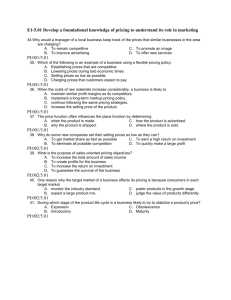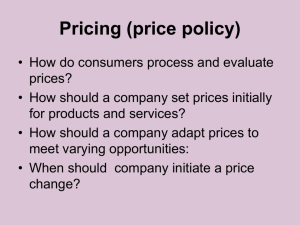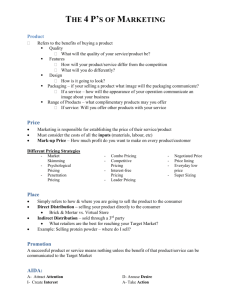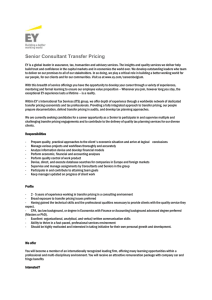PPT - Bureau of Infrastructure, Transport and Regional Economics
advertisement
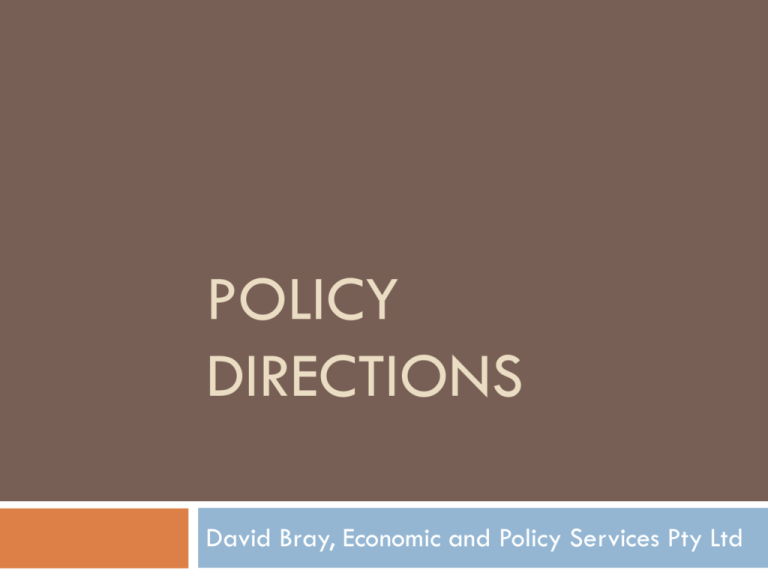
POLICY DIRECTIONS David Bray, Economic and Policy Services Pty Ltd Policy directions Review of technical issues Public policy formulation Ways forward Technical Issues Supply chains, networks and globalisation Mode choice - movement rather than mode perhaps there – for non-urban transport Future growth in demand accepted thinking considerable growth anticipated Providing adequate system capacity a challenge need for robustness relative cost of infrastructure and operations timing Technical issues - continued Economic growth Renewed emphasis Productivity Operational Safety Public efficiency views and government actions Environment Firmly on the agenda Limited agreement on best ways forward Technical issues - continued Technical issues given less emphasis Capital financing Pricing Urban transport The policy process Sabatier (1999) “Theories of the Policy Process” Some common themes for more comprehensive frameworks (multiple streams, punctuated equilibrium, advocacy coalition) Policy communities Policy windows Policy entrepreneurs Also role for policy diffusion, funnel of causality, etc Implications We do not control the agenda Though we try to varying degrees to influence it We are part of policy communities We need to have policy analysis available To support policy communities For when it is needed Two related issues – Ease of Change Different capacity for transport sub-sectors to accommodate growth, ranging through: Aviation Road transport and logistics Rail transport Urban transport In part related to the complexity of action - and Rationale for Action Can discern presented policies and proposals that are Demand led Supply led Vision or Aspirational – which can be Principles based Outcome based All have merits and risks Policy Directions - Achievements Some big issues are in place Labour aspects of micro-economic reform Concern for efficiency gains Role of rail given clearer prominence and framework is in place In general, fixed assets and operations are separated for all modes A productive tension Negative effect of protection Safety also given new prominence Future issues Infrastructure Safety Environment Strategic planning Pricing Urban transport Infrastructure Providing capacity Anticipating demand Prioritising projects Scheduling implementation Auslink Have we replaced one moral hazard with another? Road infrastructure How much road infrastructure? Sustaining road assets - how to increase discipline? Safety How to improve walking-the-walk Limits to what can be done internally The importance of demand led approaches Community buy-in and behaviour change Giving politicians the support they need Environment The awakening giant Different perspectives on solutions Need to keep research and policy analysis broadbased and current Importance of public attitudes and response Strategic planning International practice Germany, Greater Mekong Subregion, China What does this mean for us – some needs Understand context Recognise drivers of change Understand the available policy instruments Commit to following through Clear thinking; coordination; innovation & trialling Implications of planning in a market economy Pricing Progress in Germany In Australia Has Phase I ended – in a stalemate? Future needs Keep policy analysis current Look for short term opportunities, eg fixed to variable pricing Potential role for insurance companies Urban transport The lumbering giant General concurrence on the vision Limited success to date Will need to consider the roles for Demand led and planned outcome approaches Persuasion, prices and regulation policy instruments Thanks to DOTARS, BTRE, Phil Potterton & other staff and the speakers for an excellent Colloquium



